Barbell reverse curls are the most effective bicep exercise for the brachialis and brachioradialis, which are two muscles that many lifters need to bring up. Reverse grip curls also train the biceps brachii muscle, but to a lesser degree than the regular BB bicep curl.
This tutorial explains how to reverse curl with the optimal muscle-building form and then discusses the main benefits of the exercise. Then we’ll explore the variations of the movement that you can include in your next biceps bar workout, and finally, we’ll finish with a reverse barbell curl FAQ.
Related: Bicep and back workout
Reverse barbell curl exercise details
- Also Known As: Overhand curls, pronated curls
- Main Muscles: Brachioradialis, brachialis, biceps brachii
- Secondary Muscles: Forearm extensors
- Exercise Type: Strength
- Exercise Mechanics: Isolation
- Difficulty Level: Beginner
- Equipment Needed: Barbell, weights
How to do reverse curls correctly
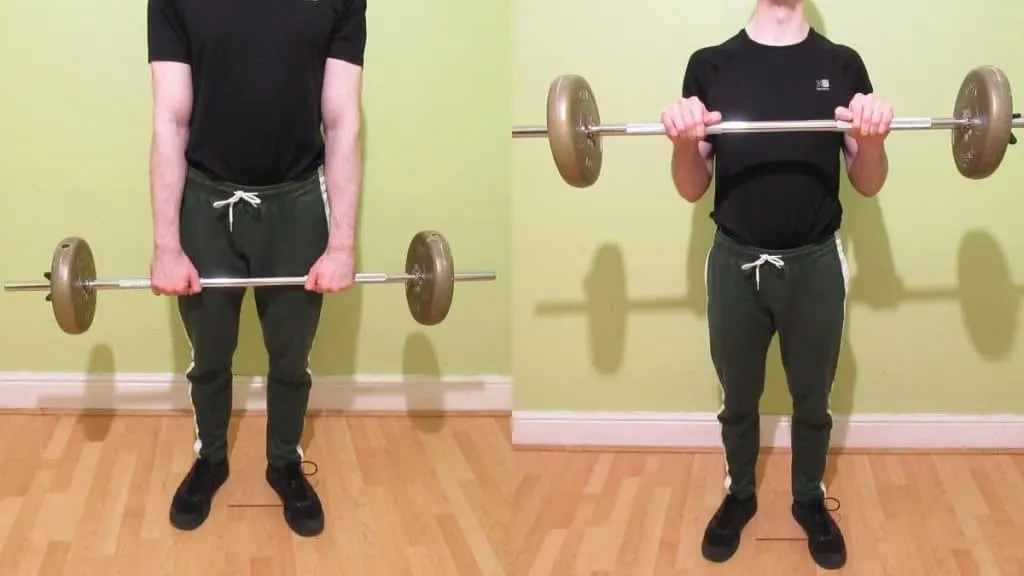
- Load an appropriate amount of weight onto a barbell. Alternatively, use a fixed bar for more convenience.
- Stand with your feet hip-width apart, and then grab the bar with a shoulder-width overhand (ideally thumbless) grip.
- Let the barbell rest against your thighs so that your elbows are extended.
- While keeping your elbows still, curl the weight toward your shoulders by moving your forearms toward your biceps.
- Keep lifting until the tops of your forearms make forceful contact with your biceps.
- Hold the contraction for a moment and then lower the barbell under control until your elbows reach full extension.
- Repeat for 3-5 sets of 6-12 reps.
Reverse curls benefits
There are numerous reverse barbell curl benefits that you can enjoy when you perform this exercise with the proper form. This is especially true if you currently have overly developed biceps in comparison to your surrounding arm muscles.
Bigger brachialis
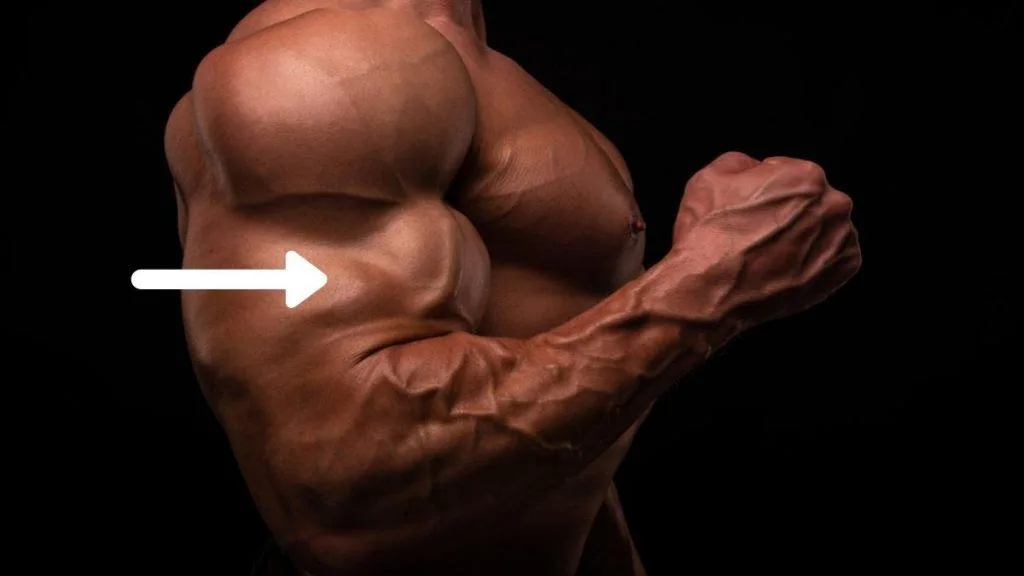
Reverse grip barbell curls place the biceps at a mechanical disadvantage, which reduces their ability to produce force and thus lift the weight. As a result, the brachialis has to take over the reins and, with help from the brachioradialis, do the vast majority of the heavy lifting. [1]
Performing the pronated curl thus helps you to sculpt more aesthetic arms because the brachialis can improve your bicep peak and make your arms look wider when it’s well-developed.
Since the brachialis is predominantly slow-twitch in its muscle fiber type composition, you’ll want to perform higher repetitions with slow negatives to target it optimally. It’s a very fatigue-resistant muscle, so trying lowering the bar over a 3-5 second duration to really put this workhorse of a muscle through its paces. [2]
Read our reverse curls vs regular curls comparison to learn more about the different muscles that these two popular exercises work.
Better brachioradialis development
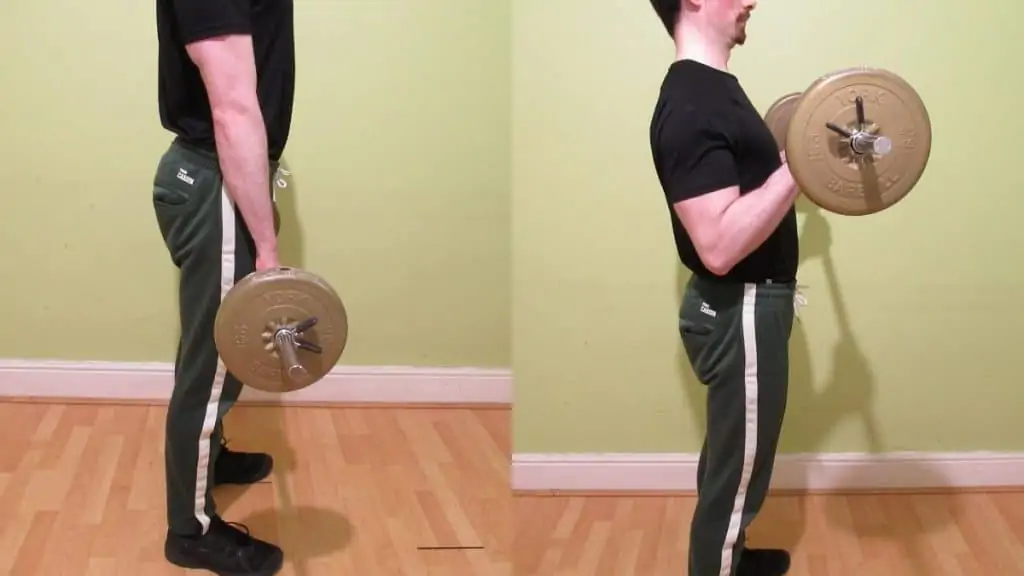
Reverse bicep curls are also a fantastic forearm drill because they target the often overlooked brachioradialis muscle. This is the thick slab of meat that runs all the way from your biceps to the thumb side of your wrist. Visually, it connects your upper and lower arms together.
As with the brachialis, the brachioradialis becomes more involved in the movement when you put the biceps in a weak position where they can’t supply much force, which is to say when you do overhand curls.
Unlike the brachialis, however, the brachioradialis is composed of predominantly fast-twitch muscle fibers. This means that it responds best to explosive, low rep lifting.
So, to target both muscles optimally, it’s strongly recommended to begin with heavy reverse barbell curls because you’ll be able to lift the most amount of weight at the start of the exercise. Then, as your muscles fatigue, lighten the resistance, perform more reps per set, and slow down your lifting tempo to really work the slow-twitch muscle fibers in general and the brachialis in particular.
Proportional arm muscles

Since many lifters have well-developed biceps but comparatively worse brachialis and brachioradialis development, the reverse grip curl is not only a great exercise for building big arms, it’s ideal for sculpting proportional arms too.
So if your biceps are making your surrounding arm muscles look small, then it’s a good idea to perform a more simple bicep workout, starting with the barbell reverse curl exercise. This way, you can train your lagging muscle groups when they’re at their freshest and thus give them the strongest muscle growth stimulus possible by lifting heavier weights and performing more quality training volume.
You can also check out our reverse curls vs hammer curls comparison if you want to see which movement is most effective for targetting your brachioradialis and brachialis muscles.
Stronger compound lifts
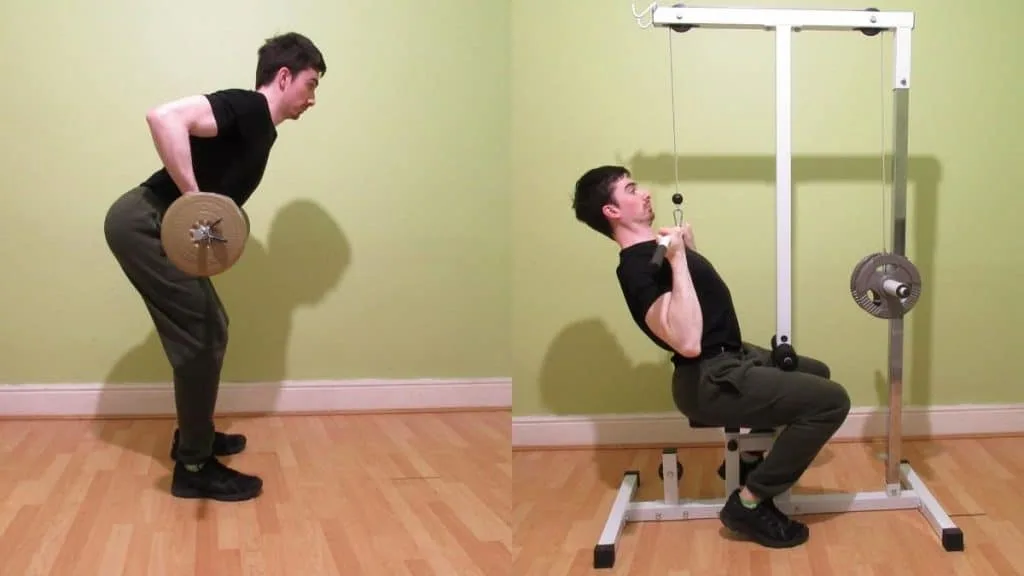
You’re only as strong as your weakest link.
If your brachioradialis can’t keep up with your lats and traps, then you’re never going to be able to build your back to its fullest potential.
Even straps won’t help in this regard because the brachioradialis is not really a gripping muscle; rather, it helps to flex the elbow, especially when your palms are pronated.
So if you want to row and pull heavy weights to overload your back and make it grow, then you need to make sure that you don’t have any weak links in your chain.
The brachioradialis is highly active in just about every overhand back movement, so make sure to perform overhand grip curls regularly so that your arms don’t hold back your lats and traps in the gym.
Reverse curl variations
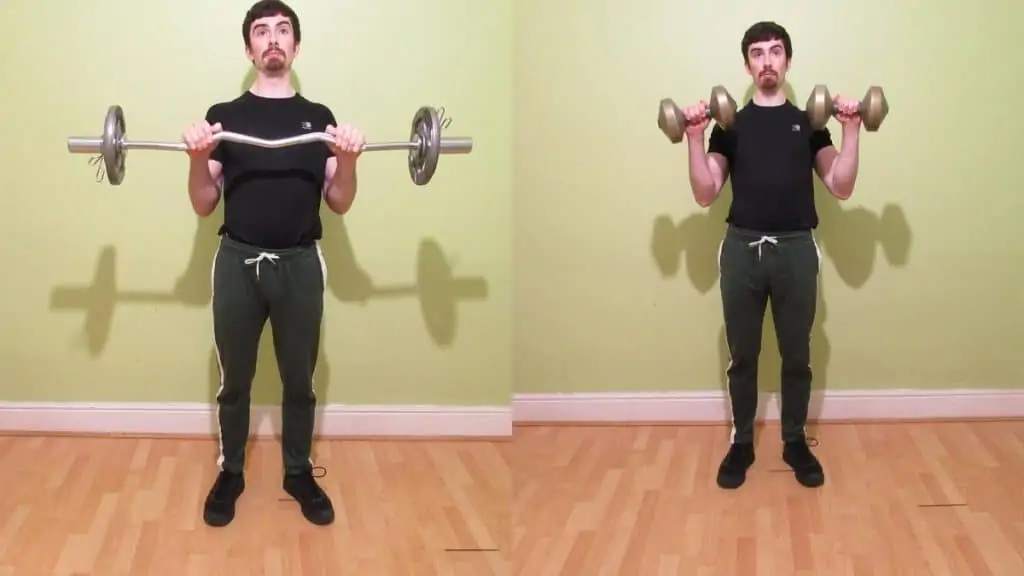
There are more than 10 ways to perform a reverse grip bicep curl (and countless other bicep curl variations). The most common way is to use a barbell. But you can also use a variety of other training tools and get much the same effects.
- Reverse cable curl
- Reverse preacher curl
- Reverse spider curls
- Reverse drag curls
- Reverse concentration curl
- Incline reverse curls
- Reverse grip EZ bar curl
- Dumbbell reverse curl
- Seated reverse dumbbell curl
- Reverse plate curls
- Single arm reverse curl
- Resistance band reverse curls
- Kettlebell reverse curls
- TRX reverse curl
Reverse curl FAQ
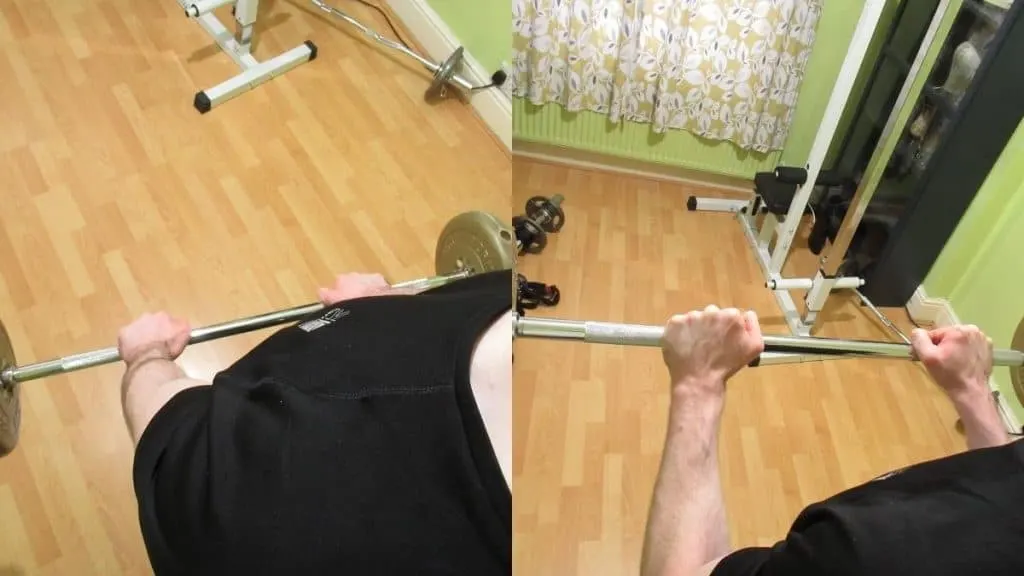
What is a reverse curl exercise?
Reverse grip curls are an arm exercise that weight lifters perform to increase the strength and muscularity of their biceps, brachialis, and brachioradialis muscles. The movement is always performed with a pronated (overhand) grip and generally with a barbell. However, the exercise is also compatible with other gym equipment like dumbbells and cables.
What muscles do reverse curls work?
Standing reverse curls primarily work the brachioradialis and brachialis. Additionally, they work the biceps brachii and the forearm extensor muscles. The deltoids and trapezius muscles are also active but only for stabilization purposes.
Are reverse curls good for the forearms?
Yes, the reverse bar curl trains the brachioradialis, which is the long, thick muscle on the thumb side of your forearm. The overhand bicep curl is especially effective for building this muscle because it places the biceps in a weak position, which forces the brachioradialis to lift more of the weight. As mentioned, the movement also trains the forearm extensor muscles.
Read More: Best short head bicep exercises
Conclusion: How effective are reverse grip curls?
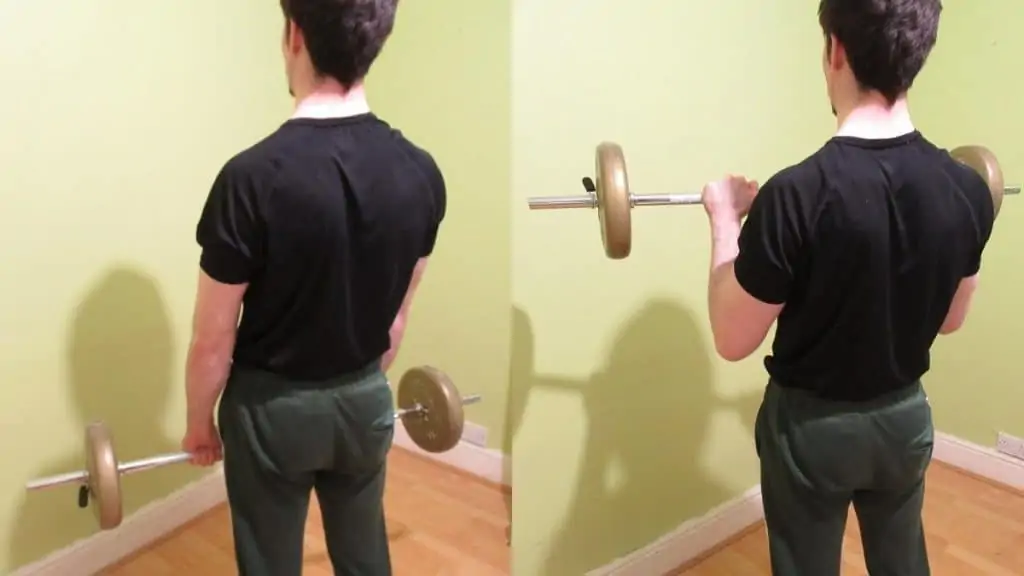
The reverse barbell curl is effective precisely because it targets the brachialis and brachioradialis, which are two muscles that are lagging in development for many lifters. It does this by placing the biceps at a mechanical disadvantage through the use of an overhand grip—thus reducing their ability to produce force—which makes the brachialis and brachioradialis work much harder.
It’s strongly recommended to use a thumbless pronated grip for reverse bicep curls if you can. This is because such a grip will prevent the bar from resting on your thumb and force your brachioradialis to work even harder.
Overall, standing reverse curls a highly underrated muscle building exercise. For optimal arm development, you should perform plenty of pronated bicep curls in addition to your regular curls so that your physique looks well-balanced and symmetrical. You could even do a superset biceps session where you start with reverse curls (when you’re at your strongest) and then move immediately into regular curls to ensure that you’re hitting all the key arm muscles.
References
- Leonello, D. T., Galley, I. J., Bain, G. I., & Carter, C. D. (2007). Brachialis Muscle Anatomy. The Journal of Bone & Joint Surgery, 89(6), 1293–1297. https://doi.org/10.2106/jbjs.f.00343
- Kulig, K., Powers, C. M., Shellock, F. G., & Terk, M. (2001). The effects of eccentric velocity on activation of elbow flexors: evaluation by magnetic resonance imaging. Medicine and Science in Sports and Exercise, 196–200. https://doi.org/10.1097/00005768-200102000-00004

